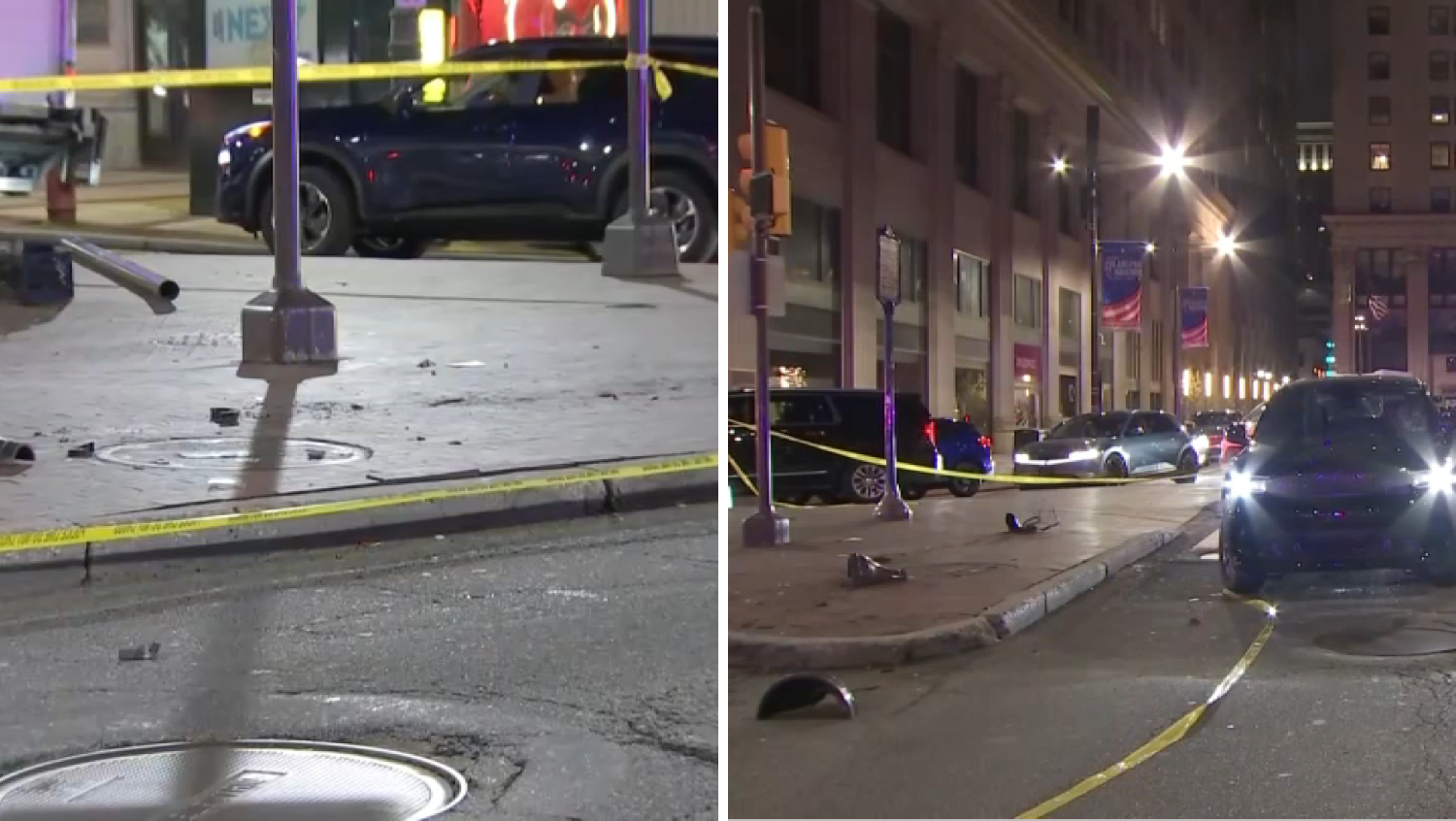Residents on the 200 block of N Wanamaker Street say they have a very big problem.
A massive tree located in an alleyway behind two homes on the block is wilting and leaning. For the Finn family, the leaning tree has created a large hole in the roof of their home that has led to so many leaks that they've had to budget their time around a schedule of emptying bucket after bucket of rain water.
"When it rains outside, it rains inside the house. I work all day and night dumping water out from the back room," Tamika Finn said.
Finn said she initially thought that a City entity would be responsible for removing the troublesome tree because she did not consider the alleyway as part of her property.
The City says, not so.
"It’s in the alley, so it belongs to somebody, but it’s not the responsibility of the City," Parks and Recreation representative Barry Bessler said.
According to the Philadelphia Streets Department website, alleys, driveways and retaining walls are private property that homeowners have the sole responsibility of maintaining; but that wasn't always the case.
Local
Breaking news and the stories that matter to your neighborhood.
Mayor Michael Nutter's spokesman Mark McDonald said the City once used funding from the Comprehensive Employment and Training Act (CETA) to operate alleyway cleanup programs, but those ended decades ago.
Without the support of government programs, the cost of caring for the City's alleyways--many of which have become a target for illegal dumping and vegetation neglect--falls back on to the shoulders of homeowners.
A representative from Corner's Landscaping and Tree Service said tree removals, in particular, can be very expensive, with estimated costs ranging from $1,000 to $5,000 depending on the location, size, and tools needed to remove a tree.
Tamika Finn and her 73-year-old disabled mother Annette Finn, said they simply cannot afford the cost of caring for the alleyway trees.
"I'm laid off. I don't have the money to fix this and my mom definitely don't have it," Tamika Finn said.
“I'm on a fixed income. My daughter works hard to help take care of me and this house. Where would I get the money to cut down a tree like that? I don’t have it," Annette Finn said.
For years the Finn's neighbor, Delores Copeland said she's been spending hundreds of dollars on maintenance of the tree. Copeland said she can't afford to do it any longer.
"That tree has been a problem for a lot of years and the alleyway is a mess. It's a hazard. I paid $300 just last year to cut it back from off of my roof. It's too expensive," Copeland said.
So, what is a cash-strapped homeowner to do about an unkempt alleyway?
While the City does not offer any tree removal programs, it does operate the Community Life Improvement Program (CLIP) that can help residents help themselves.
CLIP will provide equipment and supplies for residents to use to clean their alleys and make arrangements for debris pick-ups, but will not do the clean-ups themselves. The program does not provide tree removal services.
Homeowners can also file a complaint with the Department of Licenses and Inspections (L&I), and L&I can issue violations for littered alleyways. McDonald said L&I can also use abatement powers to clean alleys and then bill abutting homeowners, but they rarely exercise that authority.
Both options involving L&I would cost the Finn family money that they say they don't have.
After contacting and being diverted by representatives from agencies throughout the city, Tamika Finn said she reached out to PECO Energy to see if they would accept some responsibility for pruning the tree, since it is leaning on electrical wires.
PECO spokesman Deb Yemenijian said the company dispatched a crew to inspect the area on Wednesday and found that parts of the tree were, in fact, leaning on PECO wires. Yemenijian said a PECO crew would be sent to remove any tree limbs that are touching PECO wires by the end of the week.
Annette Finn said she applied for roof repair assistance from the Philadelphia Housing Development Corporation (PHDC).
PHDC spokesman Paul Chrystie said the organization's Basic Systems Repair Program could cover the full cost of a roof repair or replacement for the Finns, but the waiting list for the program is currently three years backlogged.
Annette Finn applied to the program in December 2013. Based on the current wait list, she and her daughter might not see relief from the rain that is falling through their roof until the end of 2016.



